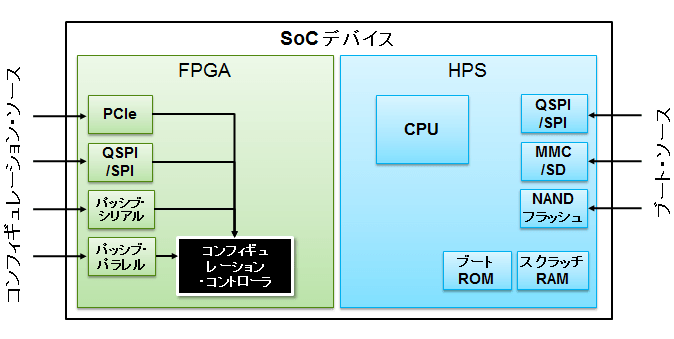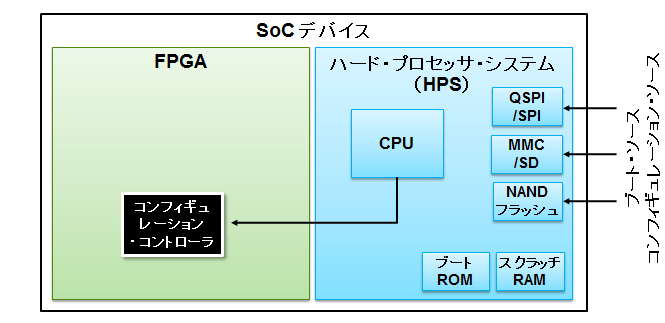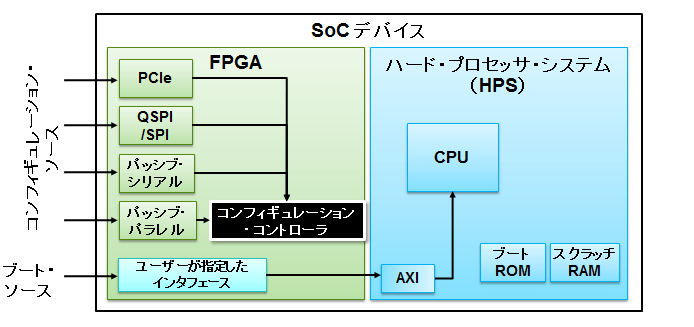The FPGA fabric portion and HPS portion of the SoC FPGA are powered independently.
With this feature, Intel SoC supports the following configuration schemes:
|
This feature can also control system power consumption in a variety of ways through a combination of clock control peripherals.
Reduce dynamic power consumption by lowering clock frequencies or gating clocks, or shutting down the FPGA fabric
This makes it possible to reduce total power consumption.
Independent execution of FPGA configuration and processor boot
FPGA fabric configuration and HPS booting can be done independently in any order, providing ultimate design flexibility.

Configure FPGA after processor boots
It is possible to boot the HPS alone and then configure the FPGA fabric.
At any time after the HPS has booted, reconfiguration of the FPGA fabric can be performed under software control.
The HPS also configures other FPGAs on the board through the FPGA configuration controller.
It is also possible.

After configuring the FPGA, boot the processor
It is also possible to upload the HPS boot code through a custom interface after configuring the FPGA fabric.


